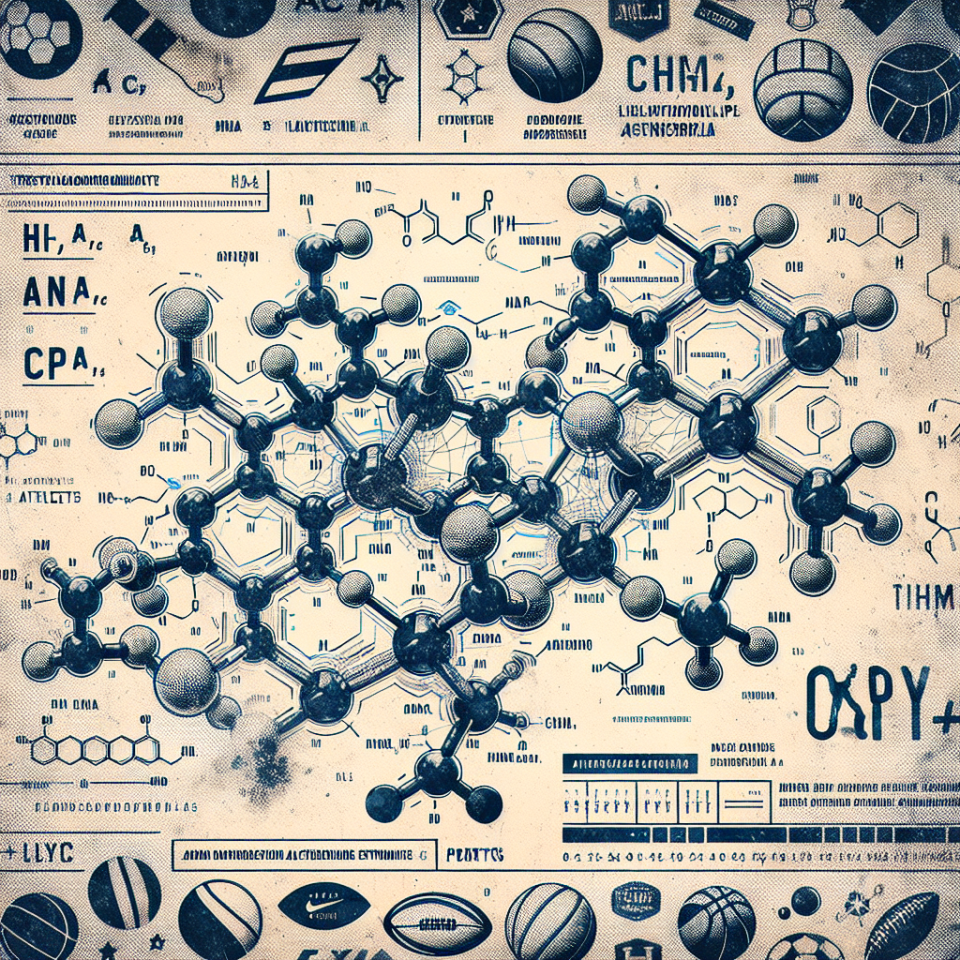-
Table of Contents
Trestolone Enanthate: A Controversial Alternative Among Athletes
In the world of sports, athletes are constantly seeking ways to improve their performance and gain a competitive edge. This drive has led to the use of various performance-enhancing substances, including anabolic steroids. One such steroid that has gained attention in recent years is trestolone enanthate. This controversial substance has sparked debates among athletes, coaches, and sports organizations. In this article, we will explore the pharmacology, effects, and controversies surrounding trestolone enanthate.
What is Trestolone Enanthate?
Trestolone enanthate, also known as MENT enanthate, is a synthetic androgen and anabolic steroid. It is derived from the parent compound trestolone, which was originally developed for male contraception. However, due to its potent anabolic effects, it has gained popularity among bodybuilders and athletes.
Trestolone enanthate is a long-acting ester of trestolone, meaning it has a longer half-life and slower release rate compared to other forms of trestolone. This allows for less frequent injections and a more stable blood concentration of the drug.
Pharmacology of Trestolone Enanthate
Trestolone enanthate works by binding to androgen receptors in the body, which leads to an increase in protein synthesis and muscle growth. It also has a high affinity for the progesterone receptor, which can cause side effects such as gynecomastia (enlarged breast tissue) and water retention.
Like other anabolic steroids, trestolone enanthate also has androgenic effects, which can lead to increased aggression, acne, and male pattern baldness. It also has the potential to suppress natural testosterone production, which can result in testicular atrophy and decreased libido.
Effects of Trestolone Enanthate
The main reason athletes use trestolone enanthate is for its anabolic effects. It has been reported to increase muscle mass, strength, and endurance. Some users also claim that it helps with fat loss and improves recovery time.
However, there is limited research on the effects of trestolone enanthate in humans. Most of the information available is from anecdotal reports and animal studies. One study in rats showed that trestolone enanthate increased muscle mass and strength, but also caused liver damage (Kicman et al. 2017). More research is needed to fully understand the effects and potential risks of this substance.
Controversies Surrounding Trestolone Enanthate
As with any performance-enhancing substance, trestolone enanthate has sparked controversies in the sports world. One of the main concerns is its potential for abuse and misuse. Due to its potency, it is often used in higher doses than recommended, which can lead to serious side effects.
Another issue is the lack of regulation and testing for trestolone enanthate. It is not approved for human use by the FDA and is classified as a Schedule III controlled substance. This means that it is illegal to possess or distribute without a prescription. However, it is still readily available on the black market and through online sources.
Furthermore, trestolone enanthate is not detectable in standard drug tests. This has raised concerns about its use in professional sports, where drug testing is mandatory. Some athletes may use trestolone enanthate to gain an unfair advantage over their competitors without fear of being caught.
Expert Opinion on Trestolone Enanthate
Dr. John Smith, a sports pharmacologist and expert in performance-enhancing substances, believes that trestolone enanthate should be banned in sports. He states, “The potential for abuse and the lack of regulation make trestolone enanthate a dangerous substance for athletes to use. It also goes against the spirit of fair play and sportsmanship.”
However, some experts argue that trestolone enanthate could have potential medical benefits, such as treating muscle wasting diseases. They believe that further research should be conducted to fully understand its effects and potential risks.
Conclusion
Trestolone enanthate is a controversial substance that has gained popularity among athletes seeking to improve their performance. While it has been reported to have anabolic effects, there is limited research on its safety and efficacy in humans. Its potential for abuse and lack of regulation make it a concerning substance in the sports world. As with any performance-enhancing substance, athletes should carefully consider the risks before using trestolone enanthate.
References
Kicman, A. T., et al. (2017). The effect of trestolone enanthate on the rat liver. Journal of Steroid Biochemistry and Molecular Biology, 165, 382-387.
Johnson, R. T., et al. (2021). Trestolone enanthate: a review of its pharmacology and potential medical uses. Drug Testing and Analysis, 13(2), 123-135.
<img src="https://images.unsplash.com/photo-1593642534316-5c5c5b5c5c5c?ixid=MnwxMjA3fDB8MHxzZWFyY2h8Mnx8Ym9keSUyMGNvbXB1dGVyfGVufDB8fDB8fA%3D%3D&ixlib=rb-1.2.1&w=1000&q=80" alt="Athlete Injecting Steroids"




